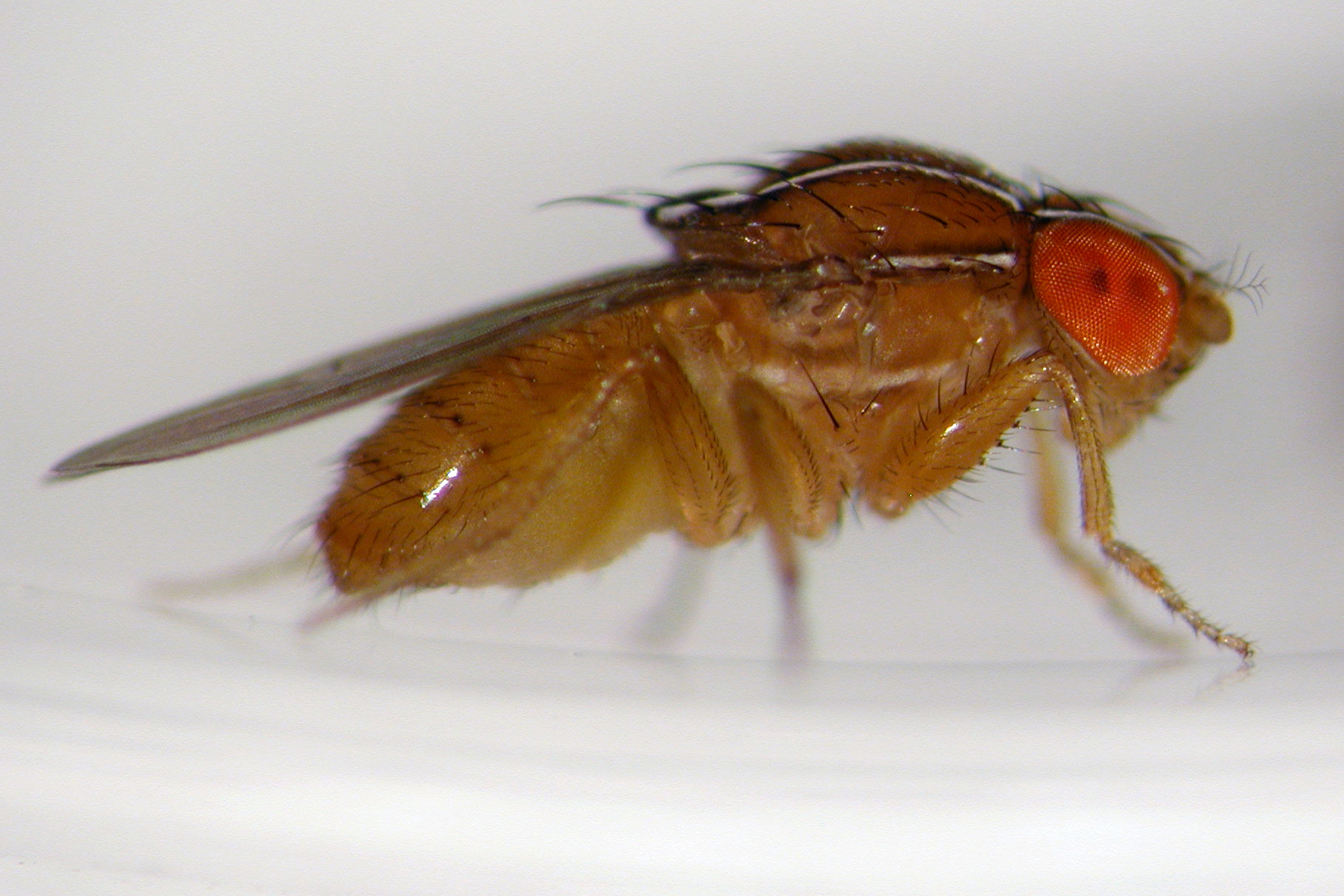 |
| Fruit flies played a vital role in the experiments leading up to the creation of the modern synthesis |
This final gap was bridged by George Gaylord Simpson. In a classic text, Tempo and Mode in Evolution, he described the existence of three fluctuating rates of change. Tachytely is the fastest, where a species or group's morphological characteristics are fluid and can change in just a few million years. Horotely is slower, with more stable species lasting for tens of millions of years. Finally, bradytely represents the slowest rate of evolution, with hundreds of millions of years passing with little change. Since Gaylord Simpson a fourth rate has been named, hypobradytely. Here change takes place over billions of years. In all other evolutionary timescales hypobradytelic organisms are stationary in time. Blue green algae or cyanobacteria to give them their proper name are examples of hypobradytelic organisms.
 |
| 1.8 billion year old chert from Western Australia containing microfossils of sulphur bacteria |
Current fossil evidence shows that sulphur bacteria have also been in no hurry to adapt or evolve. 'It seems astounding that life has not evolved for more than 2 billion years - nearly half the history of Earth,' said J. William Schopf, from UCLA. 'Given that evolution is a fact, this lack of evolution needs to be explained. The rule of biology is not to evolve unless the physical or biological environment changes, which is consistent with Darwin. These microorganisms are well-adapted to their simple, very stable physical and biological environment. If they were in an environment that did not change but they nevertheless evolved, that would have shown that our understanding of Darwinian evolution was seriously flawed.'
Schopf and his colleagues analysed 1.8 billion year old microfossils of sulphur bacteria from rocks in Western Australia using a mix of Raman spectroscopy, which enables scientists to look inside rocks to determine their composition and chemistry, and confocal laser scanning microscopy which renders fossils in 3D. They then compared the fossils to sulphur bacteria from 2.3 billion year old rocks and from modern day mud from the seabed. The three sets of specimens were indistinguishable in their morphology, showing that they evolved on a hypobradytelic timescale. Of course evolution on a molecular level is another thing entirely. While organisms may not change externally, their internal biochemistry can change radically - Volkswagen Syndrome as Martin Brasier from the University of Cambridge engagingly calls it. The fundamental biochemical pathways used by sulphur bacteria, however, have not changed since they first evolved billions of years ago.